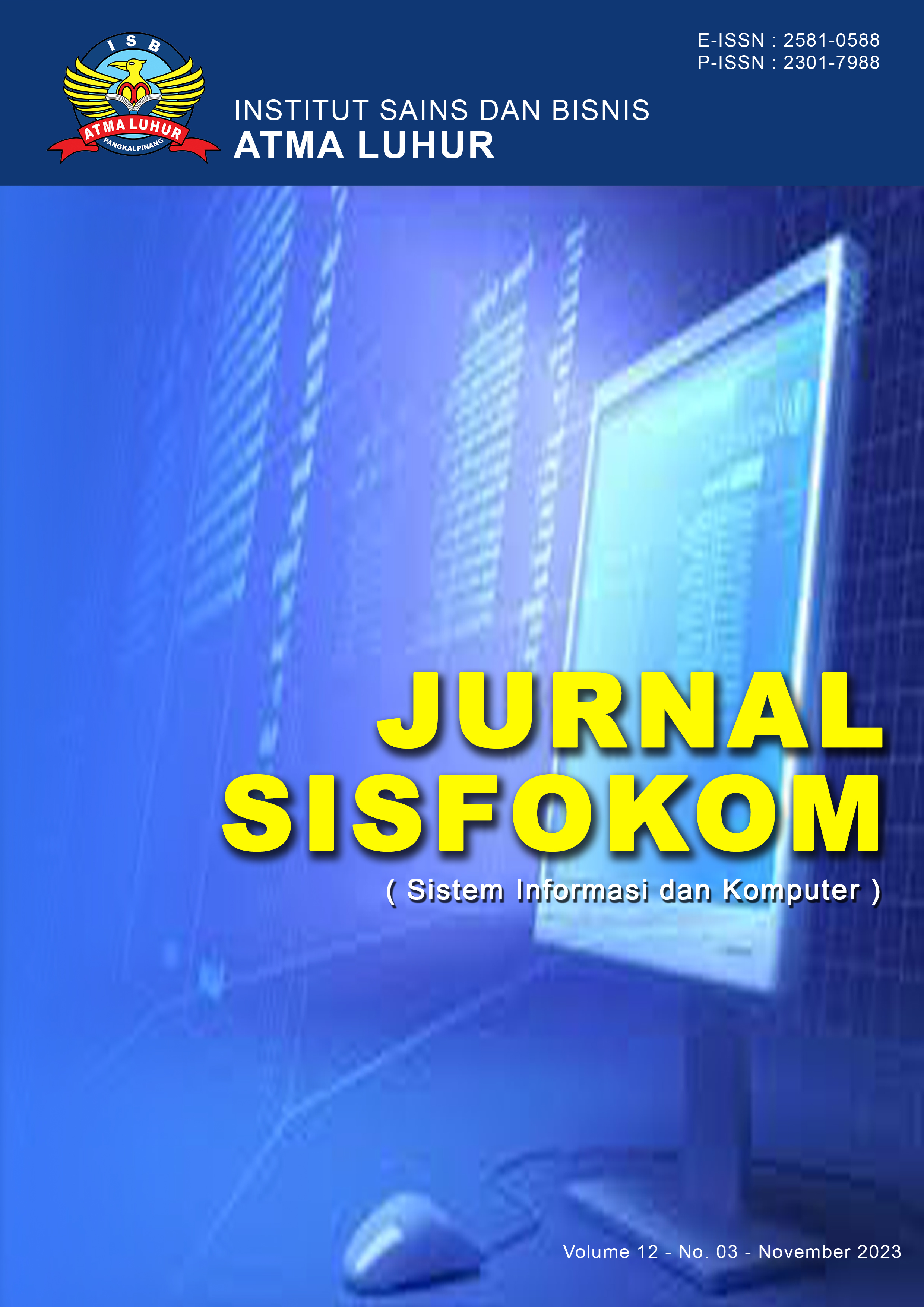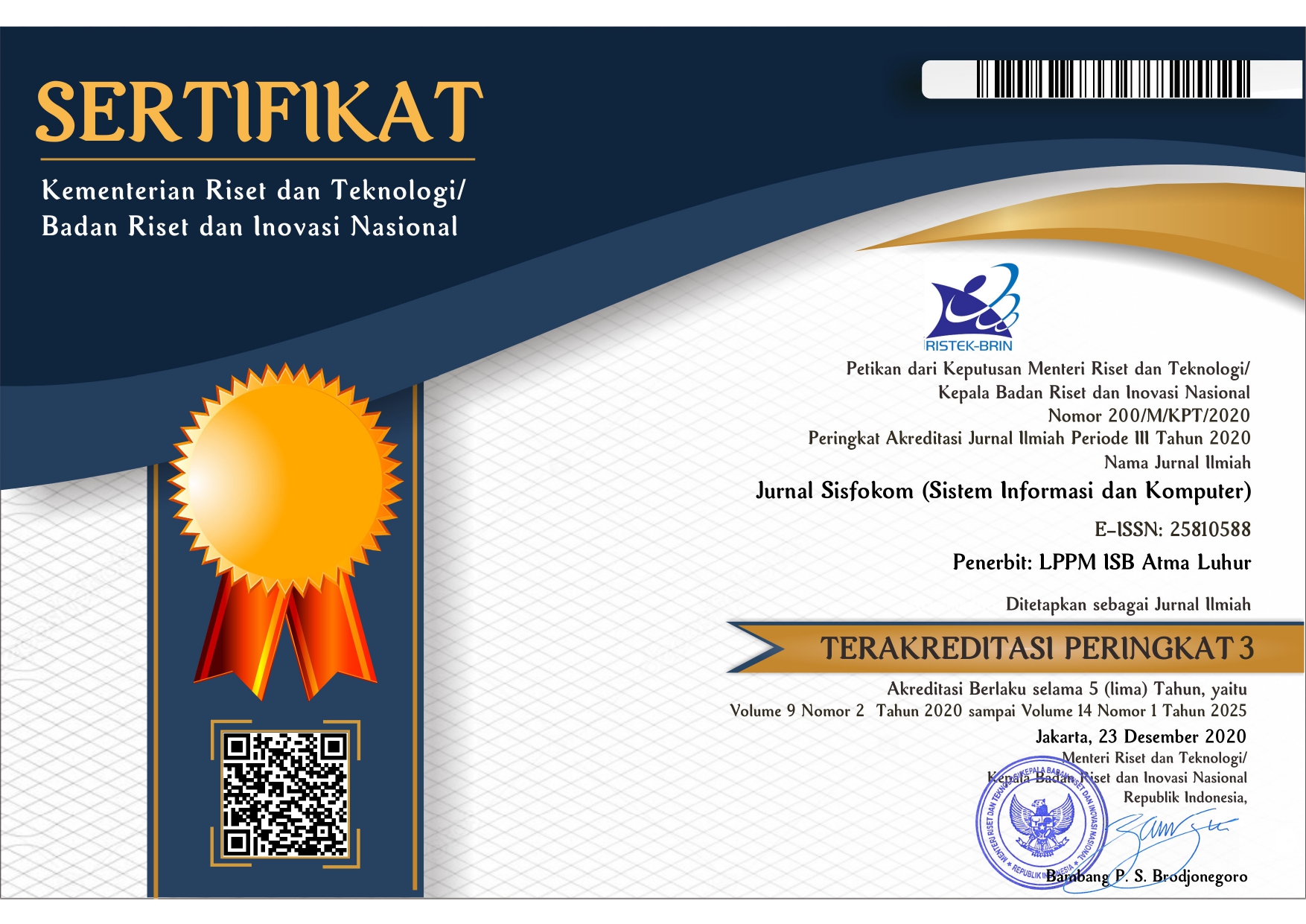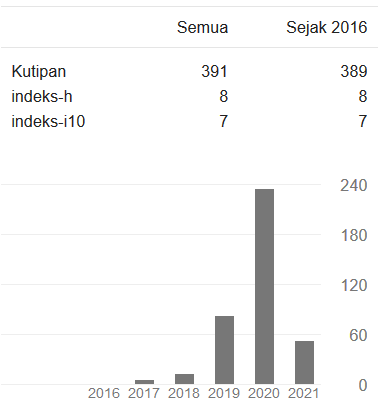Emotion Mining User Review of the BRImo Mobile Banking Application Using the Decision Tree Algorithm
DOI:
https://doi.org/10.32736/sisfokom.v12i3.1721Keywords:
Emotion Mining, Classification, BRIMO, Decision Tree, Machine Learning, Sentiment AnalysisAbstract
As consumer transaction preferences shifted from analog to digital, banks were compelled to develop digital transactions in the form of mobile banking. Users of mobile banking provide feedback regarding the application's usability. The opinions of users can be emotive. Emotions influence what a person emits or applies. Emotions are the behavioral response of a person when he is happy or unhappy. Thus, the manifestation of a person's emotions, whether in the form of facial expressions, verbal communication, written text, or judgment, can be used as a source of information to aid in decision making. The objective of this study is to apply emotion mining to the analysis of user evaluations of the BRImo application, one of the three most popular platforms in Indonesia as of August 2022, with a total of 800,000 reviews on the Play Store. Emotion Mining can be used to analyze the four categories of emotions expressed by users in the comments section: happy, angry, sad, and afraid. According to BRImo user evaluations, the decision tree algorithm is used to categorize happy, sad, afraid, and angry feelings. Using a decision tree to manage large data category sets is effective. The obtained dataset included 2959 happy classes, 2196 sad classes, 387 angry classes, and 81 scared classes. According to the findings of the analysis, a significant number of users of the BRImo application express positive sentiments in their evaluations, which are indicative of happy emotions. The Decision Tree algorithm yields results with a performance specification of 84.5%, sensitivity of 85.5%, and precision of 84.4%.References
A. C. Mandiri, Efriyanto, and E. Y. Metekohy, “Pengaruh Kualitas Layanan dan Kepercayaan Terhadap Kepuasan Nasabah dalam Menggunakan BRI Mobile (BRImo),” Account, vol. 8, no. 1, pp. 1423–1430, Jun. 2021.
“Wow! Ini Mobile Banking Terbaik Se-Indonesia,” detikNews, May 06, 2021.
L. D. Jatmiko, “Top 10 Aplikasi Bank di Indonesia,” Bisnis.com, May 24, 2022.
K. Anam, “Ramai Transaksi Mobile Banking, Bank Mana yang Tumbuh Tinggi?,” CNBC Indonesia, Apr. 28, 2023.
S. Hadi and N. Novi, “Faktor-Faktor Yang Mempengaruhi Penggunaan Layanan Mobile Banking,” Optimum: Jurnal Ekonomi dan Pembangunan, vol. 5, no. 1, p. 55, 2015, doi: 10.12928/optimum.v5i1.7840.
G. A. Sandag, E. H. E. Soegiarto, L. Laoh, A. Gunawan, and D. Sondakh, “Sentiment Analysis of Government Policy Regarding PPKM on Twitter Using LSTM,” in 2022 4th International Conference on Cybernetics and Intelligent System (ICORIS), Prapat, Indonesia: IEEE, Oct. 2022, pp. 1–6. doi: 10.1109/ICORIS56080.2022.10031474.
J. Ranganathan and A. Tzacheva, “Emotion mining in social media data,” Procedia Comput Sci, vol. 159, pp. 58–66, 2019, doi: 10.1016/j.procs.2019.09.160.
A. Yadollahi, A. G. Shahraki, and O. R. Zaiane, “Current State of Text Sentiment Analysis from Opinion to Emotion Mining,” ACM Comput Surv, vol. 50, no. 2, pp. 1–33, Mar. 2018, doi: 10.1145/3057270.
M. K. Khoirul Insan, U. Hayati, and O. Nurdiawan, “Analisis Sentimen Aplikasi BRImo Pada Ulasan Pengguna di Google Play Menggunakan Algoritma Naive Bayes,” JATI (Jurnal Mahasiswa Teknik Informatika), vol. 7, no. 1, pp. 478–483, Mar. 2023, doi: 10.36040/jati.v7i1.6373.
M. A. Ligiarta and Y. Ruldeviyani, “Customer Satisfaction Analysis of Mobile Banking Application Based on Twitter Data,” in 2022 2nd International Conference on Electronic and Electrical Engineering and Intelligent System (ICE3IS), Yogyakarta, Indonesia: IEEE, Nov. 2022, pp. 322–327. doi: 10.1109/ICE3IS56585.2022.10010221.
H. I. Harianja, “Analisis Sentimen Ulasan Pengguna terhadap Aplikasi BRImo BRI pada Situs Google Play Store Menggunakan Algoritma Support Vector Machine (SVM),” Universitas Sumatera Utara, Medan, 2022.
K. A. Rokhman, B. Berlilana, and P. Arsi, “Perbandingan Metode Support Vector Machine Dan Decision Tree Untuk Analisis Sentimen Review Komentar Pada Aplikasi Transportasi Online,” Journal of Information System Management (JOISM), vol. 3, no. 1, pp. 1–7, 2021, doi: 10.24076/joism.2021v3i1.341.
A. Kumar, V. Dabas, and P. Hooda, “Text classification algorithms for mining unstructured data: a SWOT analysis,” International Journal of Information Technology, vol. 12, no. 4, pp. 1159–1169, Dec. 2020, doi: 10.1007/s41870-017-0072-1.
D. E. Sondakh, “Comparative Study of Classification Algorithms: Holdouts as Accuracy Estimation,” Cogito Smart Journal, vol. 1, no. 1, pp. 13–23, Dec. 2015.
A. Nurfauzan and W. Maharani, “Klasifikasi Emosi Pada Pengguna Twitter Menggunakan Metode Klasifikasi Decision Tree,” eProceedings …, 2021.
Downloads
Additional Files
Published
Issue
Section
License
The copyright of the article that accepted for publication shall be assigned to Jurnal Sisfokom (Sistem Informasi dan Komputer) and LPPM ISB Atma Luhur as the publisher of the journal. Copyright includes the right to reproduce and deliver the article in all form and media, including reprints, photographs, microfilms, and any other similar reproductions, as well as translations.
Jurnal Sisfokom (Sistem Informasi dan Komputer), LPPM ISB Atma Luhur, and the Editors make every effort to ensure that no wrong or misleading data, opinions or statements be published in the journal. In any way, the contents of the articles and advertisements published in Jurnal Sisfokom (Sistem Informasi dan Komputer) are the sole and exclusive responsibility of their respective authors.
Jurnal Sisfokom (Sistem Informasi dan Komputer) has full publishing rights to the published articles. Authors are allowed to distribute articles that have been published by sharing the link or DOI of the article. Authors are allowed to use their articles for legal purposes deemed necessary without the written permission of the journal with the initial publication notification from the Jurnal Sisfokom (Sistem Informasi dan Komputer).
The Copyright Transfer Form can be downloaded [Copyright Transfer Form Jurnal Sisfokom (Sistem Informasi dan Komputer).
This agreement is to be signed by at least one of the authors who have obtained the assent of the co-author(s). After submission of this agreement signed by the corresponding author, changes of authorship or in the order of the authors listed will not be accepted. The copyright form should be signed originally, and send it to the Editorial in the form of scanned document to sisfokom@atmaluhur.ac.id.









